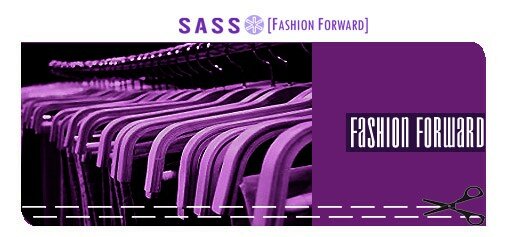SASS Magazine, December 2006, No. 11

Like its conventional counterpart, sustainable fashion is now strutting its stuff down runways from New York to Paris, but, unlike the old-guard fashion industry, "fashion forward fashion" doesn't have to include rampant overconsumption and trends that change with the weather. Read on to discover how to incorporate some "fashion forward" ideas into your life without breaking the bank or the budget.
Of all the brands embracing sustainability as a business model and way of life, Moral Fervor is near the top of our list. Born of the assumption that business, art and activism are not mutually exclusive endeavors, they put their social conscience into every aspect of the company, from the fabric they choose, to the companies they work with, to the messages they send. We had the pleasure to connect for an interview with designers Emily Santamore & Melissa Sack and business manager James Huddleston.
Many contemporary products quickly become obsolescent, and the ubiquitous umbrella is certainly one of these. Of the 33 million sold annually in the U.S. alone, hundreds of thousands break down, facing abandonment and landfills. The Umbrella Inside Out design competition was an effort to change the way we think about the umbrella, and to show the world that reuse can be just as beautiful as new -- by Kyeann Sayer
I have come to the end of my season. As a personal shopper, if I do my job right, December is a slow time when all my clients are taken care of and perfectly outfitted for winter and their holiday events. But, as always when it comes to fashion, I am focused on next season ~ spring ~ and have already begun to place orders...thus the cycle of consumption begins again -- by Rebecca Luke.
I don’t want to take the fun out of shopping. There is no denying that eco-fashion is sleek, sexy, and just as functional (if not more) than what you find in those big chain stores. When it comes time to buy, remember that every penny that you spend is going to someone, affecting the lives of everyone associated with the growth and production of the item you just bought. Are you helping to fund organic cotton farmers in Turkey or child labor in India? -- by Victoria Everman
I began wearing vintage -- or, more accurately, "pre-owned" clothing -- about twenty years ago, for reasons that had nothing to do with sustainability and everything to do with looking good on the cheap. I was working in New York City as an editorial assitant for a major publishing house. Ass-eds, as we were known, earned salaries that made other New Yorkers laugh, and feel marginally better about their own. We tended to dress in bargain-basement black garb that made us look like an unusually nerdy gang of ninjas -- by Christa Weil.
Vintage and second-hand are great ways to go when it comes to sustainable fashion; it gives new meaning to the term "pre-shrunk" and, let's face it, they just don't make some things like they used to. For the times when vintage won't cut it, here are our favorite online boutiques for fab fashion with a sustainable twist.













